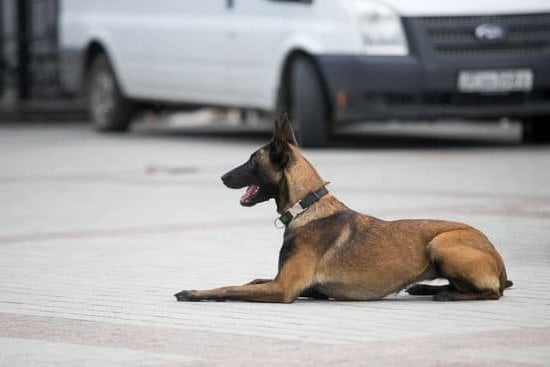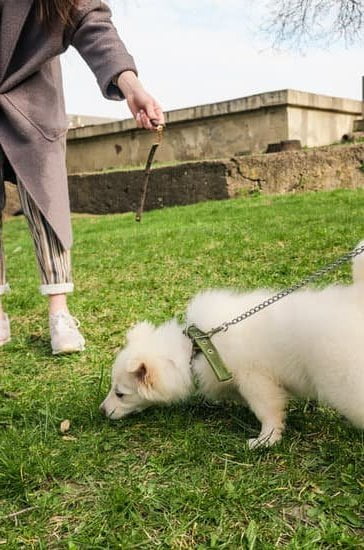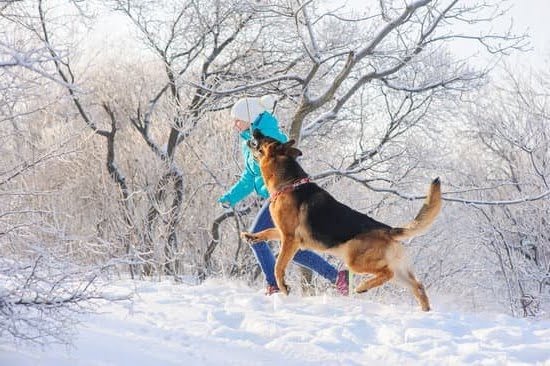Are you wondering how long to train a hunting dog and what it takes to cultivate the skills needed for a successful partnership with your four-legged companion? Training a hunting dog is a crucial aspect of ensuring a safe, effective, and enjoyable hunting experience.
From basic obedience to advanced hunting skills, there are different phases that every hunting dog must go through to become a reliable and skilled partner in the field. In this article, we will explore the various factors that affect the duration of training, the importance of setting realistic expectations, and the role of consistency and repetition in training a hunting dog.
Training a hunting dog involves more than just teaching commands and techniques-it requires building a strong bond between the hunter and their canine partner. The process is not only about developing certain behaviors but also about nurturing trust, communication, and companionship. Understanding the significance of training a hunting dog can set the foundation for a successful journey with your furry friend in the field.
In this section, we will delve into the different phases of training-starting from basic obedience skills to mastering advanced hunting abilities. We will also examine how factors such as breed, age, and previous training experience can impact the duration of training. By gaining insight into these aspects, hunters can better understand what it takes to successfully train their hunting dogs and develop realistic expectations for their progress.
The Different Phases of Training
Training a hunting dog involves several phases, starting from basic obedience and advancing to more complex hunting skills. Each phase is essential in building a well-rounded and effective hunting companion.
Basic Obedience Training
The first phase of training a hunting dog focuses on establishing basic obedience commands such as sit, stay, come, and heel. This phase lays the foundation for all subsequent training and sets the tone for the relationship between the hunter and their dog.
Introduction to Scent Work
Once basic obedience is established, the next phase involves introducing the dog to scent work. This includes familiarizing them with different scents, teaching them to track scents, and developing their ability to locate prey based on scent alone.
Advanced Hunting Skills
The final phase of training focuses on honing the hunting skills of the dog. This includes teaching them advanced techniques such as flushing, retrieving, and pointing. Advanced hunting skills also involve training the dog to respond to hand signals and whistles during hunts.
Each of these phases requires time, patience, and consistent training methods in order to successfully transition from one stage to the next. It is important for hunters to understand that each dog progresses at its own pace, so it is crucial not to rush any phase of training in order to build a strong foundation for successful hunting expeditions.
Training a hunting dog requires dedication, but with proper understanding of each phase, as well as using positive reinforcement techniques and appropriate equipment can truly enhance the experience.
Factors Affecting Training Duration
When it comes to training a hunting dog, the duration of the training process can vary significantly based on several factors. One of the key factors that affect the training duration is the breed of the dog.
Different breeds have different natural instincts and behaviors, which can impact how quickly they pick up hunting skills. For example, breeds like Labrador Retrievers and German Shorthaired Pointers are known for their strong hunting abilities and may require less time to train compared to other breeds.
Another important factor is the age of the dog. Training a hunting dog requires a lot of time and patience, and it’s generally easier to train a dog when they are younger. Puppies are more receptive to learning new skills and behaviors, making it easier to lay down a strong foundation for future hunting training. However, older dogs can still be trained successfully with the right approach and dedication.
Furthermore, previous training experience can also play a role in determining how long it takes to train a hunting dog. Dogs that have already received basic obedience training or have been exposed to hunting activities in some capacity may progress more quickly in their hunting-specific training. On the other hand, dogs with limited prior training might require more time and effort to develop the necessary hunting skills.
Overall, understanding these factors is essential for setting realistic expectations about how long it will take to train a hunting dog. While some dogs may pick up hunting skills relatively quickly, others may require more time and patience. By considering these factors, hunters can better prepare for the training journey ahead and ensure that they approach their dog’s development as effectively as possible.
- Breed of the dog
- Age of the dog
- Previous training experience
Setting Realistic Expectations
Factors Affecting Training Duration
The duration of training a hunting dog can be influenced by various factors. For instance, the breed of the dog plays a significant role in determining how long it will take to train them. Some breeds are naturally more inclined towards hunting and may require less time to develop their skills, while others may need more time and effort.
Another factor to consider is the age of the dog. Training a young puppy can be different from training an older dog. Puppies may have shorter attention spans and require more frequent breaks during training sessions. On the other hand, older dogs may already have some basic obedience skills but might need more time to unlearn certain behaviors or habits.
Previous Training Experience
The previous training experience of a hunting dog can also impact the overall duration of their training. Dogs that have received basic obedience training in the past may progress more quickly in their hunting skill development compared to dogs with no prior training. However, it’s important to note that all dogs are individuals, and their response to training will also depend on their temperament and personality.
Regardless of these factors, it’s essential for hunters to be patient and consistent throughout the training process. Building a strong foundation through positive reinforcement techniques and using proper equipment will ultimately contribute to successful hunting dog training.
The Role of Consistency and Repetition in Training a Hunting Dog
Consistency and repetition are key components in training a hunting dog. Dogs thrive on routine and structure, so being consistent in your commands, expectations, and training schedule is crucial for their development. By maintaining a consistent training regimen, you can help your hunting dog understand what is expected of them and reinforce the behaviors you want to see.
One way to ensure consistency in training is by establishing a regular training schedule. This could involve daily or weekly sessions focused on obedience, agility, or hunting skills. By setting aside dedicated time for training, you can create a routine that your dog will come to anticipate and respond to positively.
In addition to consistency, repetition is essential for reinforcing desired behaviors. Repetition helps dogs learn and retain information, so consistently practicing commands and skills will help your hunting dog become proficient in their training. Repetition also reinforces the bond between you and your dog as you work together towards common goals. Through repeated practice, both you and your dog will develop a deeper understanding of each other’s expectations and capabilities.
- Consistency in commands
- Establishing a regular training schedule
- The importance of repetition for reinforcing behaviors
Tools and Techniques for Effective Training
Training a hunting dog is a process that requires patience, dedication, and the right tools and techniques. One of the most effective methods for training a hunting dog is through positive reinforcement. This means using rewards such as treats, praise, or playtime to encourage good behavior. Positive reinforcement helps the dog associate certain actions with positive outcomes, making them more likely to repeat those behaviors in the future.
In addition to positive reinforcement, using proper equipment is essential for effective training. For example, a well-fitted collar and leash are essential for teaching basic obedience commands and ensuring the dog’s safety during training sessions. For advanced hunting skills training, tools like scent pads or dummy targets can be used to simulate real hunting scenarios and improve the dog’s tracking abilities.
It’s important for hunters to educate themselves on the most current and effective training techniques for hunting dogs. Attending training workshops or working with professional trainers can provide valuable insights into the best practices for training specific breeds and achieving optimal results. By staying informed about new developments in dog training methods, hunters can ensure that they are providing their canine companions with the most effective and humane training experience possible.
| Positive Reinforcement | Proper Equipment |
|---|---|
| Using rewards such as treats, praise, or playtime | Well-fitted collar and leash |
| Encouraging good behavior through rewards | Scent pads or dummy targets for advanced hunting skills training |
Training Milestones
Training a hunting dog is a journey that involves several milestones in assessing progress and making necessary adjustments to the training methods. It is essential for hunters to recognize these milestones as they play a crucial role in understanding the development of their canine companion.
One of the key training milestones for a hunting dog is the successful execution of basic obedience commands such as sit, stay, come, and heel. Once these commands are consistently followed by the dog, it indicates that they have grasped the fundamental concepts of training. This milestone usually occurs within the first few weeks of training, depending on the breed and previous experience of the dog.
As the training progresses, another significant milestone to look out for is the dog’s ability to respond to hunting-specific commands such as retrieving, tracking scents, and following hand signals. This phase may take longer than basic obedience training and requires patience and dedication from the hunter. It is important to adjust training methods accordingly based on how well the hunting dog responds to these specialized commands.
Additionally, milestones in desensitization to distractions such as loud noises or unfamiliar surroundings are crucial in determining how well-prepared a hunting dog is for real-life hunting scenarios. Achieving these milestones often require consistent exposure and gradual progression in training exercises. Recognizing these milestones enables hunters to tailor their training approach based on their hunting dog’s individual progress.
| Training Milestone | Expected Duration |
|---|---|
| Basic obedience commands mastered | 1-3 weeks |
| Hunting-specific commands learned | 4-6 weeks |
| Desensitization to distractions achieved | 2-3 months |
Understanding these training milestones helps hunters gauge their hunting dog’s progress effectively and make informed decisions on adjusting their training methods. By recognizing each milestone achieved by their canine companion, hunters can celebrate small victories that contribute to building a strong bond between them.
Case Studies
When it comes to training a hunting dog, the process can vary greatly depending on the specific breed, age, and previous training experience. Some dogs may pick up hunting skills quickly, while others may require more time and patience. Understanding how long to train a hunting dog can be challenging, but through case studies of successful training journeys, we can gain valuable insight into the process.
One such case study involves a Labrador Retriever named Max. Max was a young pup when his owner decided to train him for hunting. With consistent daily training sessions that focused on basic obedience and gradually introduced hunting skills, Max progressed steadily.
It took approximately 6 months of dedicated training before Max was fully prepared to accompany his owner on hunting trips. This case study demonstrates that with the right approach and commitment, a hunting dog can be effectively trained within a reasonable timeframe.
Another inspiring story is that of Bella, a rescued German Shorthaired Pointer with no prior hunting experience. Bella’s owner embarked on her training journey with realistic expectations and a willingness to invest the necessary time and effort. Through positive reinforcement techniques and focused training sessions, Bella began to develop her hunting abilities.
It took nearly a year of consistent training before Bella displayed the level of proficiency needed for successful hunts. This case study highlights the importance of patience and perseverance in the training process.
One common thread throughout these case studies is the significance of consistency and repetition in training a hunting dog. By establishing a regular routine and consistently reinforcing desired behaviors, both Max and Bella were able to achieve success in their respective training journeys. These stories serve as reminders that while each dog’s training duration may vary, with dedication and the right approach, any dog can become a skilled hunting companion.
Conclusion
In conclusion, the process of training a hunting dog is a crucial and rewarding journey for both the dog and its owner. As mentioned in the previous sections, the duration of training can vary depending on factors such as breed, age, and previous training experience.
It is important for hunters to understand that patience, consistency, and repetition are essential elements in successful hunting dog training. The bond between a hunter and their well-trained companion is truly special and should be celebrated.
While some dogs may require more time and effort to master advanced hunting skills, the key to successful training lies in setting realistic expectations and understanding that every dog learns at its own pace. By using positive reinforcement, proper equipment, and identifying progress through training milestones, hunters can ensure that their dogs are well-prepared for the field.
Ultimately, the joy of watching a well-trained hunting dog perform in the field is worth the time and effort invested in their training. Whether it takes several months or even years to fully train a hunting dog, the bond formed between a hunter and their companion throughout this process is truly invaluable.
So, no matter how long it takes to train a hunting dog, the journey towards building a strong relationship between a hunter and their canine partner is always worth it in the end.
Frequently Asked Questions
Is It Hard to Train a Hunting Dog?
Training a hunting dog can be a challenging but rewarding experience. It requires patience, consistency, and proper techniques to mold them into skilled hunters. While some breeds may have natural hunting instincts, all dogs require training to refine their skills.
What Is the Best Age to Train a Hunting Dog?
The best age to start training a hunting dog is typically around 6-8 months old. At this age, they have developed mentally and physically enough to begin learning basic commands and skills. Starting too early may overwhelm them, while starting too late could hinder their potential.
What Is the Easiest Hunting Dog to Train?
The easiest hunting dog to train largely depends on individual temperament and breed characteristics. However, popular choices for ease of training include Labrador Retrievers, German Shorthaired Pointers, and English Springer Spaniels. These breeds are known for their intelligence, eagerness to please, and adaptability in the field.

Welcome to the blog! I am a professional dog trainer and have been working with dogs for many years. In this blog, I will be discussing various topics related to dog training, including tips, tricks, and advice. I hope you find this information helpful and informative. Thanks for reading!





